Yue Sun
Senior Member, IEEE
Probing the Critical Point (CritPt) of AI Reasoning: a Frontier Physics Research Benchmark
Oct 01, 2025Abstract:While large language models (LLMs) with reasoning capabilities are progressing rapidly on high-school math competitions and coding, can they reason effectively through complex, open-ended challenges found in frontier physics research? And crucially, what kinds of reasoning tasks do physicists want LLMs to assist with? To address these questions, we present the CritPt (Complex Research using Integrated Thinking - Physics Test, pronounced "critical point"), the first benchmark designed to test LLMs on unpublished, research-level reasoning tasks that broadly covers modern physics research areas, including condensed matter, quantum physics, atomic, molecular & optical physics, astrophysics, high energy physics, mathematical physics, statistical physics, nuclear physics, nonlinear dynamics, fluid dynamics and biophysics. CritPt consists of 71 composite research challenges designed to simulate full-scale research projects at the entry level, which are also decomposed to 190 simpler checkpoint tasks for more fine-grained insights. All problems are newly created by 50+ active physics researchers based on their own research. Every problem is hand-curated to admit a guess-resistant and machine-verifiable answer and is evaluated by an automated grading pipeline heavily customized for advanced physics-specific output formats. We find that while current state-of-the-art LLMs show early promise on isolated checkpoints, they remain far from being able to reliably solve full research-scale challenges: the best average accuracy among base models is only 4.0% , achieved by GPT-5 (high), moderately rising to around 10% when equipped with coding tools. Through the realistic yet standardized evaluation offered by CritPt, we highlight a large disconnect between current model capabilities and realistic physics research demands, offering a foundation to guide the development of scientifically grounded AI tools.
MambaControl: Anatomy Graph-Enhanced Mamba ControlNet with Fourier Refinement for Diffusion-Based Disease Trajectory Prediction
May 15, 2025Abstract:Modelling disease progression in precision medicine requires capturing complex spatio-temporal dynamics while preserving anatomical integrity. Existing methods often struggle with longitudinal dependencies and structural consistency in progressive disorders. To address these limitations, we introduce MambaControl, a novel framework that integrates selective state-space modelling with diffusion processes for high-fidelity prediction of medical image trajectories. To better capture subtle structural changes over time while maintaining anatomical consistency, MambaControl combines Mamba-based long-range modelling with graph-guided anatomical control to more effectively represent anatomical correlations. Furthermore, we introduce Fourier-enhanced spectral graph representations to capture spatial coherence and multiscale detail, enabling MambaControl to achieve state-of-the-art performance in Alzheimer's disease prediction. Quantitative and regional evaluations demonstrate improved progression prediction quality and anatomical fidelity, highlighting its potential for personalised prognosis and clinical decision support.
PhysLLM: Harnessing Large Language Models for Cross-Modal Remote Physiological Sensing
May 06, 2025Abstract:Remote photoplethysmography (rPPG) enables non-contact physiological measurement but remains highly susceptible to illumination changes, motion artifacts, and limited temporal modeling. Large Language Models (LLMs) excel at capturing long-range dependencies, offering a potential solution but struggle with the continuous, noise-sensitive nature of rPPG signals due to their text-centric design. To bridge this gap, we introduce PhysLLM, a collaborative optimization framework that synergizes LLMs with domain-specific rPPG components. Specifically, the Text Prototype Guidance (TPG) strategy is proposed to establish cross-modal alignment by projecting hemodynamic features into LLM-interpretable semantic space, effectively bridging the representational gap between physiological signals and linguistic tokens. Besides, a novel Dual-Domain Stationary (DDS) Algorithm is proposed for resolving signal instability through adaptive time-frequency domain feature re-weighting. Finally, rPPG task-specific cues systematically inject physiological priors through physiological statistics, environmental contextual answering, and task description, leveraging cross-modal learning to integrate both visual and textual information, enabling dynamic adaptation to challenging scenarios like variable illumination and subject movements. Evaluation on four benchmark datasets, PhysLLM achieves state-of-the-art accuracy and robustness, demonstrating superior generalization across lighting variations and motion scenarios.
Enhancing the Patent Matching Capability of Large Language Models via the Memory Graph
Apr 21, 2025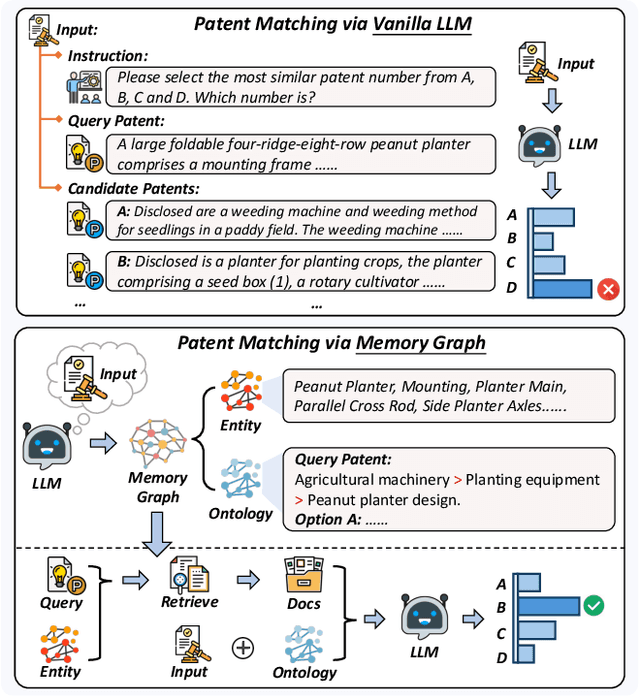
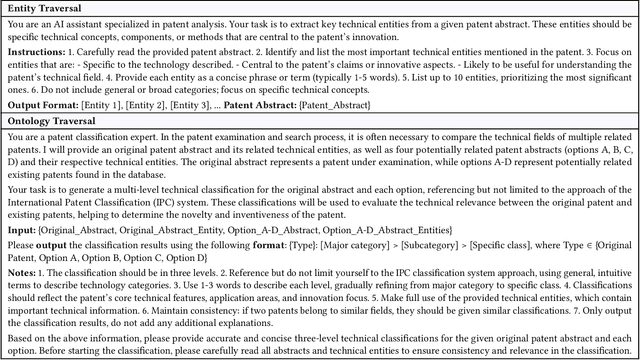
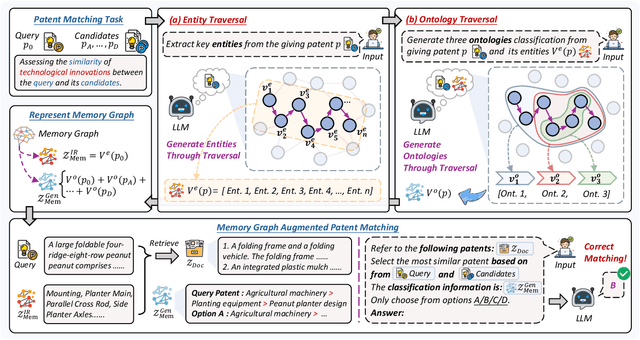
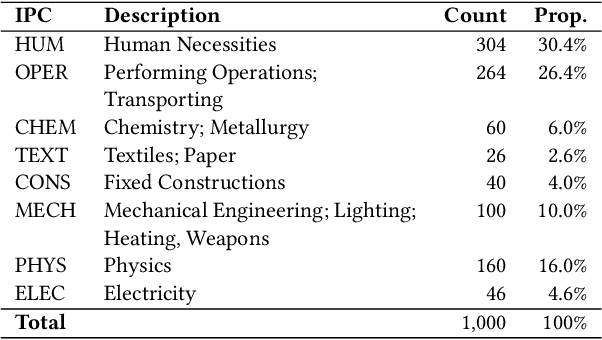
Abstract:Intellectual Property (IP) management involves strategically protecting and utilizing intellectual assets to enhance organizational innovation, competitiveness, and value creation. Patent matching is a crucial task in intellectual property management, which facilitates the organization and utilization of patents. Existing models often rely on the emergent capabilities of Large Language Models (LLMs) and leverage them to identify related patents directly. However, these methods usually depend on matching keywords and overlook the hierarchical classification and categorical relationships of patents. In this paper, we propose MemGraph, a method that augments the patent matching capabilities of LLMs by incorporating a memory graph derived from their parametric memory. Specifically, MemGraph prompts LLMs to traverse their memory to identify relevant entities within patents, followed by attributing these entities to corresponding ontologies. After traversing the memory graph, we utilize extracted entities and ontologies to improve the capability of LLM in comprehending the semantics of patents. Experimental results on the PatentMatch dataset demonstrate the effectiveness of MemGraph, achieving a 17.68% performance improvement over baseline LLMs. The further analysis highlights the generalization ability of MemGraph across various LLMs, both in-domain and out-of-domain, and its capacity to enhance the internal reasoning processes of LLMs during patent matching. All data and codes are available at https://github.com/NEUIR/MemGraph.
MoEdit: On Learning Quantity Perception for Multi-object Image Editing
Mar 13, 2025Abstract:Multi-object images are prevalent in various real-world scenarios, including augmented reality, advertisement design, and medical imaging. Efficient and precise editing of these images is critical for these applications. With the advent of Stable Diffusion (SD), high-quality image generation and editing have entered a new era. However, existing methods often struggle to consider each object both individually and part of the whole image editing, both of which are crucial for ensuring consistent quantity perception, resulting in suboptimal perceptual performance. To address these challenges, we propose MoEdit, an auxiliary-free multi-object image editing framework. MoEdit facilitates high-quality multi-object image editing in terms of style transfer, object reinvention, and background regeneration, while ensuring consistent quantity perception between inputs and outputs, even with a large number of objects. To achieve this, we introduce the Feature Compensation (FeCom) module, which ensures the distinction and separability of each object attribute by minimizing the in-between interlacing. Additionally, we present the Quantity Attention (QTTN) module, which perceives and preserves quantity consistency by effective control in editing, without relying on auxiliary tools. By leveraging the SD model, MoEdit enables customized preservation and modification of specific concepts in inputs with high quality. Experimental results demonstrate that our MoEdit achieves State-Of-The-Art (SOTA) performance in multi-object image editing. Data and codes will be available at https://github.com/Tear-kitty/MoEdit.
Depth-aware Fusion Method based on Image and 4D Radar Spectrum for 3D Object Detection
Feb 21, 2025Abstract:Safety and reliability are crucial for the public acceptance of autonomous driving. To ensure accurate and reliable environmental perception, intelligent vehicles must exhibit accuracy and robustness in various environments. Millimeter-wave radar, known for its high penetration capability, can operate effectively in adverse weather conditions such as rain, snow, and fog. Traditional 3D millimeter-wave radars can only provide range, Doppler, and azimuth information for objects. Although the recent emergence of 4D millimeter-wave radars has added elevation resolution, the radar point clouds remain sparse due to Constant False Alarm Rate (CFAR) operations. In contrast, cameras offer rich semantic details but are sensitive to lighting and weather conditions. Hence, this paper leverages these two highly complementary and cost-effective sensors, 4D millimeter-wave radar and camera. By integrating 4D radar spectra with depth-aware camera images and employing attention mechanisms, we fuse texture-rich images with depth-rich radar data in the Bird's Eye View (BEV) perspective, enhancing 3D object detection. Additionally, we propose using GAN-based networks to generate depth images from radar spectra in the absence of depth sensors, further improving detection accuracy.
Unifying Explainable Anomaly Detection and Root Cause Analysis in Dynamical Systems
Feb 17, 2025Abstract:Dynamical systems, prevalent in various scientific and engineering domains, are susceptible to anomalies that can significantly impact their performance and reliability. This paper addresses the critical challenges of anomaly detection, root cause localization, and anomaly type classification in dynamical systems governed by ordinary differential equations (ODEs). We define two categories of anomalies: cyber anomalies, which propagate through interconnected variables, and measurement anomalies, which remain localized to individual variables. To address these challenges, we propose the Interpretable Causality Ordinary Differential Equation (ICODE) Networks, a model-intrinsic explainable learning framework. ICODE leverages Neural ODEs for anomaly detection while employing causality inference through an explanation channel to perform root cause analysis (RCA), elucidating why specific time periods are flagged as anomalous. ICODE is designed to simultaneously perform anomaly detection, RCA, and anomaly type classification within a single, interpretable framework. Our approach is grounded in the hypothesis that anomalies alter the underlying ODEs of the system, manifesting as changes in causal relationships between variables. We provide a theoretical analysis of how perturbations in learned model parameters can be utilized to identify anomalies and their root causes in time series data. Comprehensive experimental evaluations demonstrate the efficacy of ICODE across various dynamical systems, showcasing its ability to accurately detect anomalies, classify their types, and pinpoint their origins.
URoadNet: Dual Sparse Attentive U-Net for Multiscale Road Network Extraction
Dec 23, 2024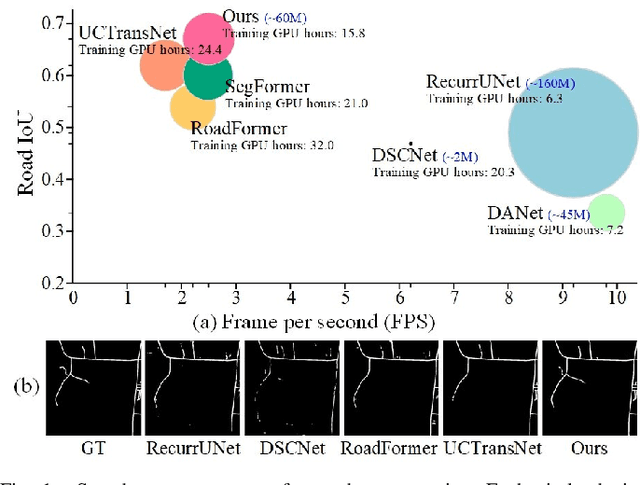
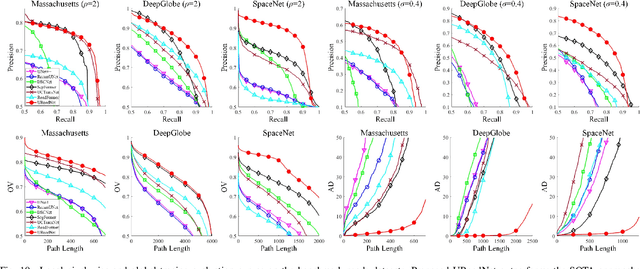
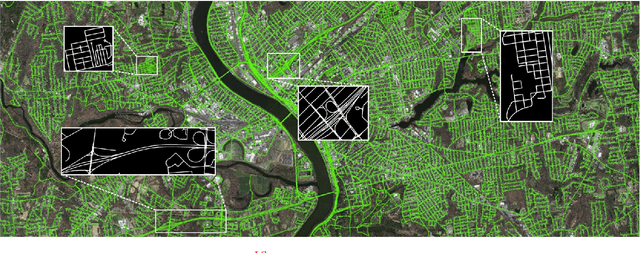
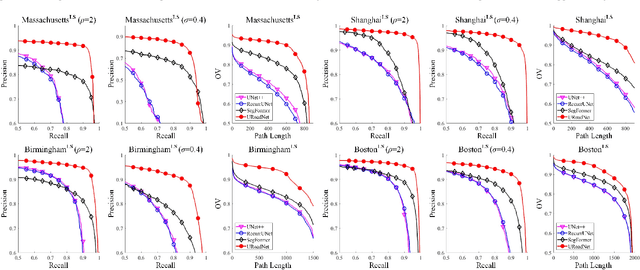
Abstract:The challenges of road network segmentation demand an algorithm capable of adapting to the sparse and irregular shapes, as well as the diverse context, which often leads traditional encoding-decoding methods and simple Transformer embeddings to failure. We introduce a computationally efficient and powerful framework for elegant road-aware segmentation. Our method, called URoadNet, effectively encodes fine-grained local road connectivity and holistic global topological semantics while decoding multiscale road network information. URoadNet offers a novel alternative to the U-Net architecture by integrating connectivity attention, which can exploit intra-road interactions across multi-level sampling features with reduced computational complexity. This local interaction serves as valuable prior information for learning global interactions between road networks and the background through another integrality attention mechanism. The two forms of sparse attention are arranged alternatively and complementarily, and trained jointly, resulting in performance improvements without significant increases in computational complexity. Extensive experiments on various datasets with different resolutions, including Massachusetts, DeepGlobe, SpaceNet, and Large-Scale remote sensing images, demonstrate that URoadNet outperforms state-of-the-art techniques. Our approach represents a significant advancement in the field of road network extraction, providing a computationally feasible solution that achieves high-quality segmentation results.
PromptV: Leveraging LLM-powered Multi-Agent Prompting for High-quality Verilog Generation
Dec 15, 2024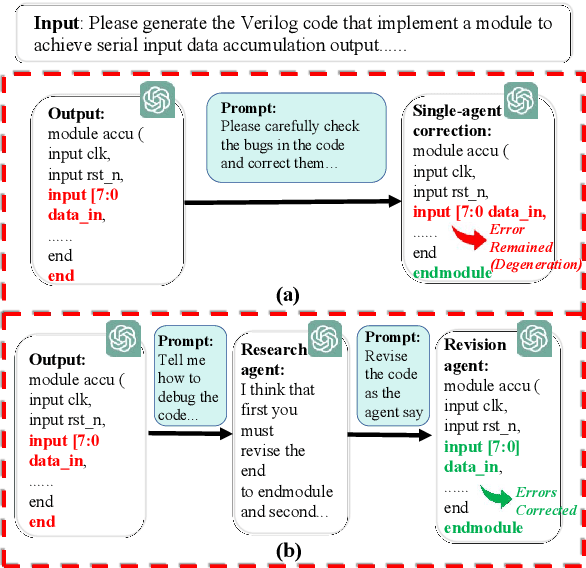
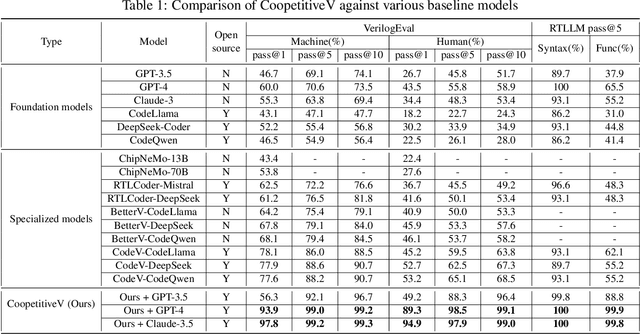
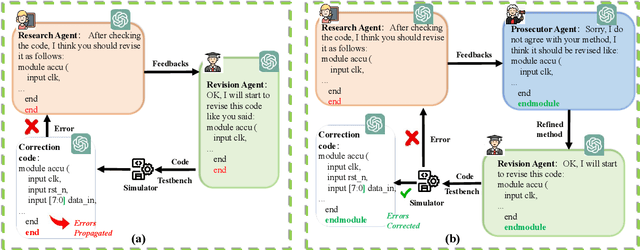
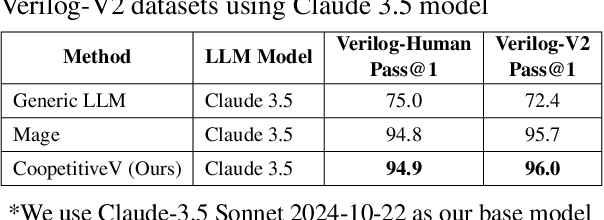
Abstract:Recent advances in agentic LLMs have demonstrated remarkable automated Verilog code generation capabilities. However, existing approaches either demand substantial computational resources or rely on LLM-assisted single-agent prompt learning techniques, which we observe for the first time has a degeneration issue - characterized by deteriorating generative performance and diminished error detection and correction capabilities. This paper proposes a novel multi-agent prompt learning framework to address these limitations and enhance code generation quality. We show for the first time that multi-agent architectures can effectively mitigate the degeneration risk while improving code error correction capabilities, resulting in higher-quality Verilog code generation. Experimental results show that the proposed method could achieve 96.4% and 96.5% pass@10 scores on VerilogEval Machine and Human benchmarks, respectively while attaining 100% Syntax and 99.9% Functionality pass@5 metrics on the RTLLM benchmark.
Relative Difficulty Distillation for Semantic Segmentation
Jul 04, 2024



Abstract:Current knowledge distillation (KD) methods primarily focus on transferring various structured knowledge and designing corresponding optimization goals to encourage the student network to imitate the output of the teacher network. However, introducing too many additional optimization objectives may lead to unstable training, such as gradient conflicts. Moreover, these methods ignored the guidelines of relative learning difficulty between the teacher and student networks. Inspired by human cognitive science, in this paper, we redefine knowledge from a new perspective -- the student and teacher networks' relative difficulty of samples, and propose a pixel-level KD paradigm for semantic segmentation named Relative Difficulty Distillation (RDD). We propose a two-stage RDD framework: Teacher-Full Evaluated RDD (TFE-RDD) and Teacher-Student Evaluated RDD (TSE-RDD). RDD allows the teacher network to provide effective guidance on learning focus without additional optimization goals, thus avoiding adjusting learning weights for multiple losses. Extensive experimental evaluations using a general distillation loss function on popular datasets such as Cityscapes, CamVid, Pascal VOC, and ADE20k demonstrate the effectiveness of RDD against state-of-the-art KD methods. Additionally, our research showcases that RDD can integrate with existing KD methods to improve their upper performance bound.
 Add to Chrome
Add to Chrome Add to Firefox
Add to Firefox Add to Edge
Add to Edge